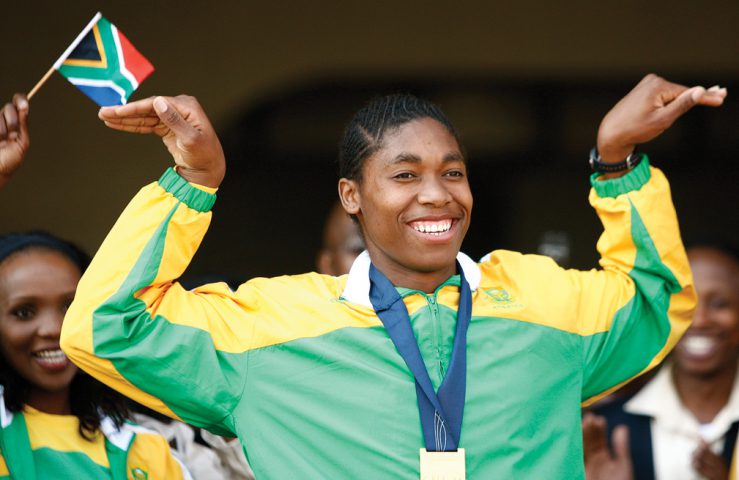Caster Semenya’s August 19 victory celebration was short-lived. Hours after she received the gold medal in the women’s 800-meter competition at the World Athletic Championships in Berlin, news broke that the 18-year old athlete had been asked by the world athletics body, the International Association of Athletics Federations, to undergo gender testing. Semenya outran her competition by more than 2 seconds.
Concerns about Semenya’s gender were allegedly raised because of her significant improvement, her muscular build, her facial hair and her deep voice. The IAAF is administering an array of complicated gender verification tests to determine whether Semenya is entirely a woman, or whether there is some “ambiguity” of the masculine kind, which might have given her an “unfair advantage.”
The test, which takes weeks to yield results, requires a physical medical examination, as well as investigations by an expert on gender, an endocrinologist, a psychologist, an internal medicine specialist and a gynecologist.
The IAAF’s decision sparked controversy around the world. In her home country of South Africa, the gender test was hailed as an example of Western racist policies aimed at telling Black African women what they should look like, and how they should present their gender.
Leonard Chuene, the head of South African athletics, was outraged by the publicization of the gender tests, the Guardian reported. “Who are white people to question the makeup of an African girl?” Chuene asked, adding, “I say this is racism, pure and simple. In Africa, as in any other country, parents look at new babies and can see straight away whether to raise them as a boy or a girl. We are now being told that it is not so simple.”
Truthfully, it is not so simple. In the United States alone, roughly one in every 2000 births presents some intersex variation, making the categories of “boy” and “girl” insufficient.
“’Intersex’ is a general term used for a variety of conditions in which a person is born with a reproductive or sexual anatomy that doesn’t seem to fit the typical definitions of female or male,” explains the Intersex Society of North America.
The differences are many, and can be on the level of chromosomes, gonads and genitals, among others. But, because being intersex has historically been considered an anomaly, rather than a natural variation, there has been very little interest in creating policy to allow intersex athletes to compete.
According to current regulation, if Semenya fails the gender verification test, meaning she is found to have any of what are traditionally considered “male” characteristics, she will lose her medal and her right to compete in future athletics competitions.


What Do You Think?